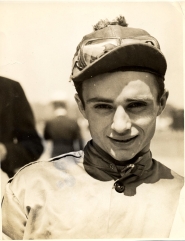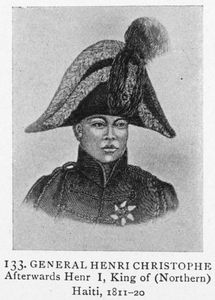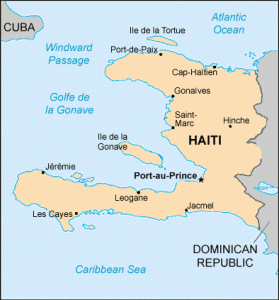
Gertrude Bell
Gertrude Bell followed where her curiosity led in ways no woman had before. She broke the ultimate glass ceiling by becoming a friend and confidant to numerous sheiks in Mesopotamia, with enough influence to be considered one of the founders of the country of Iraq. The literal heights she scaled and emotional low she felt bookmarked her remarkable professional life as someone who intimately understood that home is where your heart is.
Bell had an upper class upbringing near Newcastle, England. Her father, Sir Hugh Bell, inherited a fortune from the Bell Brothers Ironworks, but education was a priority, and he studied in Edinburgh, at the Sorbonne and in Germany. He married Mary Shield, but she died three weeks after Bell’s younger brother, Maurice, was born. Sir Hugh was devoted to his children, but he was lonely and knew the children needed a mother. He married Florence Olliffe who was easily integrated into the family.
Bell’s commanding, adventuresome spirit manifested itself early on, and she took it out on her little brother. One time when she led the terrified boy along the edge of the greenhouse roof, she crossed handily but he slipped and fell, and it was his turn to break through the glass ceiling.
Formal elementary education was traditionally reserved for boys, so while her brother was at boarding school, Bell spent lonely days devouring books from the family library. When she was 16, she was sent to Queen’s College in London and excelled in every class except scripture, declaring herself an atheist because she did not believe a word of the Bible. Ironically, as an adult she would carve out a life for herself in the cradle of the world’s three most important religions.
She matriculated at Oxford University, and Bell’s confidence and intellect had prepared her for the rigors of such a demanding education. During her oral final exam, when the professor, a distinguished historian, asked a question about Charles I, Bell had the audacity to say that she held a different opinion of the monarch. Then, when another professor asked about a German town that was on the left bank of the Rhine, Bell casually contradicted him before answering, saying that she was positive town was on the right bank because she had been there. Her assertiveness did not blight her evaluation, and she set her first record as a woman by becoming the first female student to receive the highest grade possible in Modern History.
Bell came out as a debutante in London and was presented to Queen Victoria. But if the goal of the formal debut was to find a husband, no one suitable presented himself. Without romantic prospects or many career options, she jumped at the opportunity to go with her aunt and uncle to Persia. Sir Frank Lascelles was the British ambassador to Tehran. Six months before leaving, Bell started learning Persian and was able to understand the locals when she arrived in June 1892.
This was the beginning of two great love affairs. First, she was totally captivated by the people and culture of Persia, her introduction to the Middle East. Second, she was smitten by the British legation secretary, Hon. Henry Cadogan. Finally she had found someone to give her heart to and who returned her affections, and they got engaged. When her parents heard of the impending nuptials, they didn’t approve because Cadogan didn’t earn enough money in foreign service to support their daughter well enough, and he was a gambler. Bell was heartbroken, but she obeyed her parents and returned to England. One year later Cadogan died of pneumonia.
During the ensuing years, Bell studied Persian and Arabic. Ultimately she would become fluent in both languages as well as German, French and Italian. She continued to travel, following her personal philosophy of the pursuit of personal happiness coupled with the moral responsibility for the welfare of others. She became proficient in horseback riding, hunting, dancing, shooting, fishing, gardening and mountain climbing.
AIMING FOR THE TOP In 1899 Bell made her first major ascent, climbing to the top of the Meije in the French Alps, over 13,000 feet. There were no proper clothes for female climbers then, so Bell took off her skirt when she and her guides roped up together and continued in her underclothes until they descended back to the glacier. After more hair-raising, confidence-building ascents, Bell decided to be the first person to climb all the peaks of the Engelhörnerrange in the Swiss Alps. She accomplished her goal during two weeks in 1901 wearing a blue climbing suit with pants, although she always changed back into her skirt at base camp. Of the nine peaks, she was the first person to summit seven of them. One mountain top was named after her, Gertrudspitze.
After her record-breaking mountain climbing adventures in Europe, Bell headed east to a warmer clime. When she was 31 years old she went to Jerusalem at the invitation of friends. Her days were filled with language lessons (Arabic, Hebrew and Turkish), horseback riding and socializing. Bell rode “astride” the horse for the first time, and the sisters at the local convent stitched a long, split skirt so she could still be ladylike.
IT’S ALL ABOUT THE JOURNEY From Jerusalem, Bell took extensive journeys into the desert on horseback accompanied only by cooks, muleteers and her guide, all local men. During her first expedition she painfully learned the need to protect herself from the severe desert environment. From then on, she wore the traditional keffiyeh (scarf) over her hat and around her face and a lightweight veil with eye holes. She covered her feet with cloth so the sun wouldn’t scorch them through her boots, and she made a muslin sleeping bag to protect against sand fleas while camping at night. To help pass the time while crossing the vast landscape, Bell learned how to read and nap on horseback.

Gertrude Bell in Iraq, age 41 (photo: University of Newcastle)
In addition to learning survival techniques for traversing the desert, Bell had to learn the protocol of presenting herself to the sheiks of the tribes as she passed through their territories. Her knowledge of history and languages and the fact that she was a woman traveling alone impressed and endeared her to most of the sheiks. Because of the style in which Bell traveled, her small entourage became a substantial caravan. She earned the respect of the local rulers, and they referred to her as Queen. In camp she always had two tents for herself, one that was erected immediately with a writing table and comfortable chair. The other had her convertible bed and a bath, which was prepared for her as soon as a fire was built and hot water was available. In her trunks she packed clothes for every occasion. When she was in a city she had evening dresses and fur coats. She carried linen skirts, sweaters, scarves, boots, hats veils, parasols, lavender soap, hair brushes, Egyptian cigarettes in a silver case, insect powder, maps, books, and blankets. For dining she had a Wedgewood dinner service, crystal glasses, linen tablecloths and silver candlesticks. She had binoculars and guns to give as gifts to the important sheiks, and she carried her own weapons, cameras and film hidden under her petticoats.
Bell’s curiosity about the Middle East went way beyond tourism. She took courses in archaeology and cartography, and she was an accomplished photographer. It became her mission to document ancient ruins and the current landscape, and she published numerous books of her work and experiences which, in many cases, became the definitive reference for the region and influenced policy decisions.
LOVE AND LOSS Despite a deep affinity for the people and places of the Middle East, Bell’s heart and mind were distracted by the growing affections for an Englishman, Major Charles (“Dick”) Doughty-Wylie, a decorated war hero. Unfortunately, Dick was married. The pair shared a common view of the world and enjoyed each other’s company, but the time they could spend together had many limitations. The couple’s correspondence from various foreign lands evolved from conversational to include the passion and angst of distant love.
Bell wanted to serve her country in World War I, so in November 1914, she went to France to work for the Red Cross Wounded and Missing Enquiry Department. She took the initiative to create a workable system to keep accurate records of the wounded soldiers. Surprisingly, despite her apparent restlessness, she found she loved the desk work.
With his wife in Europe, Doughty-Wylie sent word to Bell that he would be in London for a few days before being deployed to the front lines. Bell jumped at the opportunity to be alone with him. They spent four days together, and this time, there was only one limitation that imposed itself. Bell’s Victorian morals would not allow her to consummate the relationship since Doughty-Wylie would never get a divorce.
Bell returned to France, and Doughty-Wylie was deployed to Gallipoli. He was killed heroically in a battle with Turkish troops. Bell had been called back to London to set up a new office for Wounded and Missing. She found out her lover’s fate when, at a party, someone casually mentioned what happened in Gallipoli. For the second time in her 47 years she was devastated by losing the love of her life.
A NEW HOME Since Bell had spent almost two years in the Arabian Desert as an explorer, cartographer, photographer and archaeologist and was an expert in the policies and personalities of the region, she was summoned to Cairo, Egypt with the rank of Major. She was the first woman officer in the history of British military intelligence. The British agenda included fighting the Turks to retain access to oil and preventing India from annexing Mesopotamia. Bell’s desire was for a unified Arab nation, but she acknowledged that that would be impossible and worked to establish independent Arab states.
Bell moved to Basra and was given the title of Oriental Secretary with status as an Assistant Political Officer. She was instrumental in establishing order in the Basra vilayet (province). In April 1917, Bell was 49 years old, and she moved to Baghdad to continue her work. This would be her permanent home for the rest of her life.
THE BIRTH OF A NATION In Baghdad, Bell became active in nation building. The British occupied Iraq, fighting the Turks for rights to the oil, but mistakes were made, and the occupation was becoming very expensive for Britain.
In 1918, the incoming Judicial Officer, Sir Edgar Bonham-Carter, after conferencing with Bell, took the first steps toward creating an independent nation by setting Arabic as the official legal language of Iraq and establishing a new court system for civil and Sharia law in an effort to appease Sunnis and Shia. Five new schools for girls were opened with female faculty.
Eventually boundaries were agreed upon to divide Mesopotamia into individual countries, and Bell and her colleagues lobbied to have Faisal ibn Hussain, a direct descendent of the Prophet Muhammad and son of Sharif Hussain ibn Ali, installed as the first ruler of the self-governed new Iraq. Faisal officially became king in 1921, and Bell’s dreams of Arab independence were realized.
Bell knew Faisal personally, and he enjoyed her company and relied on her as a confidant in political matters. He commissioned her to help design the first flag and his personal standard. Because of Bell’s extensive archaeological expertise, Faisal appointed her Director of Antiquities. Her first duty was to write antiquities laws that would balance the rights of the host nation and excavators. Bell established the Baghdad Museum, maintaining that Iraq had the right to own its past.* The principal wing of the museum was named after her. Bell continued to go on many archaeological digs, and she won a coin toss for a Semitic statuette from 2800 BC.
LEAVING GRACEFULLY When Bell was 55 years old, she had a third love interest, but this relationship never matured beyond a friendship. For all her physical activities, she was sick a lot during her life. She was a chain smoker, and she suffered from malaria twice, jaundice and bronchitis. In 1925 Bell went to London for a visit. Her family had lost their fortune and was forced to give up their mansion, which was demolished. Bell’s doctor advised her not to return to the oppressive climate of the Iraqi summer, but Baghdad was her home, and she could not stay away. When she returned she contracted pleurisy.
With her ill health, financial troubles, no husband and reduced political responsibility, Bell became depressed. On July 11, 1926 she came home exhausted from the heat after a swimming party. She told her maid to wake her up at six am and went to bed early. Her maid dutifully checked in on Bell after a couple of hours and found a suspicious bottle of pills on the bed stand. Bell died in the early hours of July 12 of an overdose, two days before her 58th birthday.
The British government duly honored Bell for her work. In October 1917 Bell was made a Commander of the new Order of the British Empire, and five months later she received the Founder’s Medal of the Royal Geographical Society. When she died, King George V sent his personal condolences to Bell’s parents.
* This is the same as the National Museum of Iraq that was looted during the war in 2003.
QUESTION: Do you agree with the saying, “It is better to have loved and lost than never to have loved at all?” Why?
©2011 Debbie Foulkes All Rights Reserved
Sources:
Howell, Georgina, Gertrude Bell Queen of the Desert, Shaper of Nations. New York: Farrar, Straus and Giroux, 2006.
Wallach, Janet, Desert Queen The Extraordinary Life of Gertrude Bell: Adventurer, Adviser to Kings, Ally of Lawrence of Arabia. New York: Nan A. Talese, 1996.
Winstone, H.V.F., Gertrude Bell. New York: Quartet Books Inc., 1978.






